 Written by Henry Hoffman, MS, OTR/L
Written by Henry Hoffman, MS, OTR/L
Following a stroke, patients usually begin rehabilitation as soon as possible to speed up the recovery process. There are many Stroke Recovery products available that help reduce pain, improve circulation, support mobility, and regain function following a stroke.
The shoulder is the most common source of pain for stroke survivors. As many as 84 percent experience shoulder pain from subluxation, and recovery from a stroke often includes addressing shoulder issues. Commonly caused by weakened rotator cuff muscles, shoulder subluxation can be exacerbated in stroke patients by poor posture from weak back muscles and shoulder stiffness.
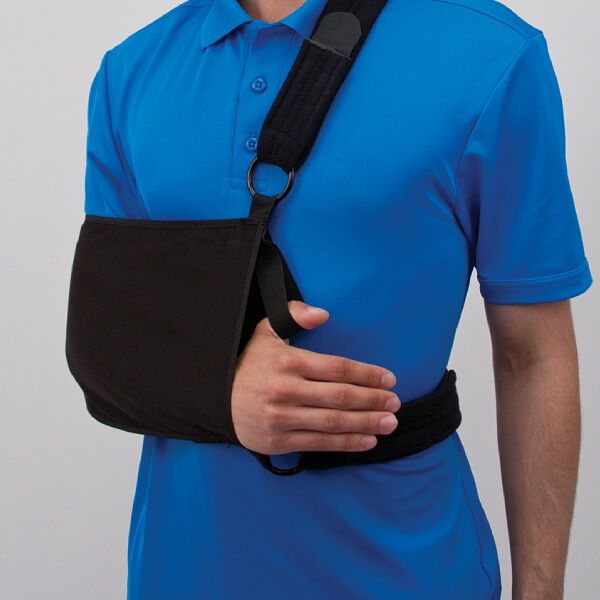
Shoulder subluxation is a partial dislocation of the joint. This is usually caused by weakness in the muscles that connect the upper arm bone to the shoulder blade, leaving them unable to maintain proper shoulder alignment while the arm is moving. When the arm is pulled down and away from the shoulder blade, it causes pain and limits function. Poor posture can make this condition worse, and muscle stiffness that stresses the joint can also add to the joint being out of alignment.

It is common for stroke patients to have shoulder problems. The shoulder joint has a ball and socket, and the pull of gravity can force the joint out of alignment. When a stroke causes muscle weakness and/or spasticity, the structures of the shoulder don’t remain in the proper position. The accompanying overstretched muscles, ligaments, and tendons contribute to pain with movement and impaired range of motion.

Post-stroke rehabilitation for shoulder subluxation starts with keeping the arm and shoulder properly supported. Without support, the joint and ligaments might not be strong enough on their own to offset the pull of gravity. In addition to products that support and maintain proper positioning to help minimize pain, electrical stimulation therapy that sends electrical impulses to the muscles also helps lessen pain, improves circulation, reduces inflammation, and leads to improved shoulder function.
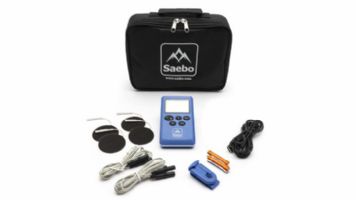 | SaeboStim Pro | NMES, TENS, and E Stim Machine View Product |
The SaeboStim Pro is a valuable tool to treat muscles that need to be retrained or relaxed. It has two independent electrical channels that can provide electrical impulses to multiple sets of nodes with a wide range of settings. This small, versatile unit is highly portable and easy to store, and it has the capability of treating a large area or providing pinpoint direct stimulation to a small targeted area.
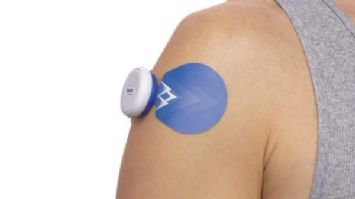 | SaeboStim One Wireless EMS Unit View Product |
The wireless SaeboStim One Wireless EMS Unit electrical stimulation device strengthens shoulder muscles via electrical signals delivered through wireless electrodes. It’s compact, affordable, and discreet, targeting weakened muscles with a convenient delivery method of electrical impulses without having to keep track of wired node connections.
The SaeboMAS mini is a portable version of the standard SaeboMAS, and it is often used for home therapy by people who have some arm control and movement. By unweighting the affected arm, this zero-gravity mobile positioning support helps the user accomplish tasks of daily living while improving strength and motor control during rehabilitation following a stroke.
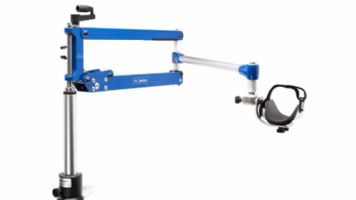 | SaeboMAS Mobile Arm Support for Stroke Recovery View Product |
A larger, more robust professional therapy version of the SaeboMAS Mini, the SaeboMAS Mobile Arm Support is a zero-gravity mobile arm support that helps users (who have some arm movement and control) perform daily tasks by unweighting the arm to allow for functional activities and therapeutic exercises. This fosters functional independence, increased muscle strength, and enhanced motor control.
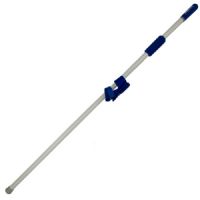 | SaeboGlide Plus Shoulder Rehab Device for Stroke Recovery View Product |
For stroke patients who have some ability to raise or extend their arm, the SaeboGlide can be used while lying down, sitting, or standing to allow for exercise in all planes of movement. With the hand on the gliding sleeve, the distal support provided allows the user to exercise the affected arm in a controlled manner appropriate for their level of strength.
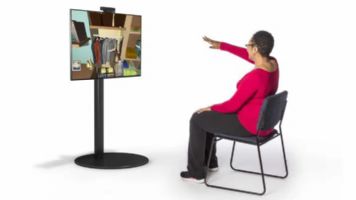 | SaeboVR - VR for Stroke Rehabilitation | FOR CLINICIAN USE ONLY View Product |
Utilizing fun activities, stroke patients can take part in activities of daily living through the intuitive and easily navigated SaeboVR. Users who have some use of their arms take place in physical and cognitive challenges that simulate daily living activities in an engaging virtual reality environment. This device provides feedback in real-time to help stroke patients progress efficiently in their therapy.
Ideal for wrist, elbow, and shoulder therapy, the SaeboRejoyce incorporates a wide range of computer gaming activities in stroke rehabilitation. For users who have the ability to at least partially extend their arm, this therapy tool supports improved coordination and fine motor control through challenging exercises delivered via this device’s joystick.
Shoulder subluxation, caused by muscle weakness, is one of the more common challenges faced by stroke patients. It affects almost 85 percent of people who’ve had a stroke.
Traditional slings and other supportive devices have been used to treat shoulder subluxation after a stroke, but studies haven’t proven definitively that this equipment can reposition the ball in the joint socket to prevent shoulder subluxation.
A sling that supports the weight of the arm and allows the elbow to straighten can help reduce shoulder subluxation. If a sling is part of a therapy plan, it must be worn correctly and will usually be used on a short-term basis while the stretched ligaments, tendons, and muscles are healing. After an initial period of rest, stimulating the weakened muscles and moving the arm is a necessary part of successful rehabilitation.

The muscle weakness, ligament and tendon stretching, and effects of gravity on the shoulder joint following a stroke cause pain and movement issues for a large portion of stroke patients. Causing pain and significantly hampering arm movement and range of motion, shoulder subluxation can be a barrier to accomplishing daily life activities. Tools that support, stabilize, and stimulate the area to strengthen and retrain the muscles will help the patient get the most out of their rehabilitation efforts.
Our catalog of Saebo Products for Sale provides a wide range of tools designed to assist in recovery following a stroke.
If you or someone you care about has been affected by a stroke, we have several informative Stroke Recovery articles that can help you navigate post-stroke rehabilitation. You can also visit our blog, Caregiver University for articles on aging in place, wheelchairs, caregiving, special needs, and many more subjects of interest.
Thanks for reading!

Henry is known as a purveyor of neuroplasticity-based treatment and co-founder of Saebo, a leading provider of novel and evidence-based stroke recovery solutions. For over 20 years, he has provided hundreds of national and international brain injury/stroke courses certifying thousands of occupational and physical therapists worldwide.
Henry’s first stroke product, the SaeboFlex, was placed on permanent public display at the Wellcome Medicine Galleries exhibit at the Science Museum in London. The SaeboFlex was alongside other medical breakthrough technologies spanning the last 500 years, including the first MRI machine and the penicillin mold.
Saebo’s tagline is “No Plateau in Sight” with the understanding that there is no expiration date on neuroplasticity. Henry believes that patients can continue to make gains many years post-stroke and live a happy, healthy, and more independent life.